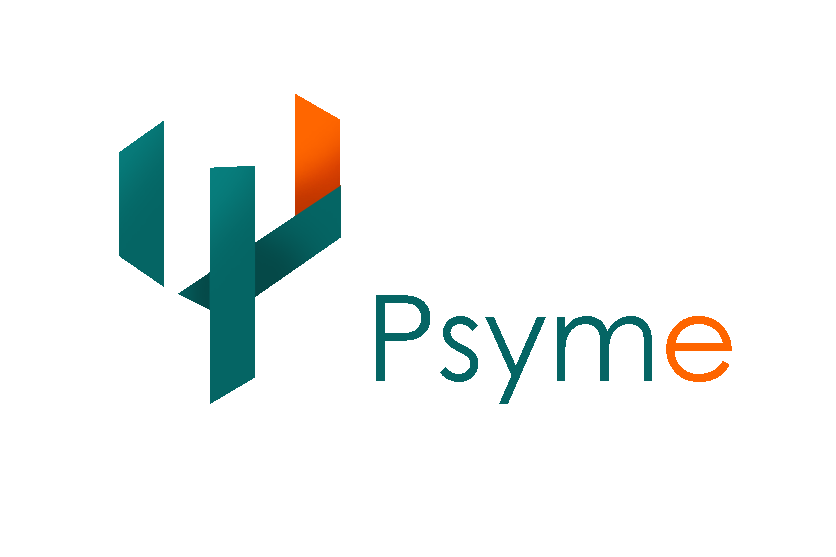Two Ways to Resolve Feelings of Dread About the Future
Người dịch: Minh Hà – Hiệu đính: Lyn
Life affords many opportunities to feel dread. It’s an emotion that is highly unpleasant, feels uncontrollable, and comes from getting stuck in your head. You become preoccupied with some experience you’re about to face and all you can think about is how bad it will be. You try to think optimistically that it won’t be that bad, but you’re not convinced. Your mind quickly reverts back to the negative; that you’ll be highly anxious, even panicky, and you’ll be embarrassed or worse, humiliated. We’re most likely to feel dread when we find the anticipated experience threatening.
Cuộc sống không ít lần khiến ta cảm thấy sợ hãi. Đây là một cảm xúc cực kỳ khó chịu, tưởng như không thể kiểm soát và nảy sinh từ tình trạng mắc kẹt trong suy nghĩ của bản thân. Khi ám ảnh về một trải nghiệm sắp phải đối mặt, bạn chỉ có thể nghĩ tới những viễn cảnh tồi tệ nhất. Dù cố gắng lạc quan và tự nhủ mọi chuyện sẽ không tệ đến thế, bạn vẫn gợn lòng hoài nghi. Tâm trí bạn nhanh chóng quay về với suy nghĩ tiêu cực rằng bạn sẽ lo lắng tột độ, thậm chí hoảng loạn, xấu hổ hoặc mất mặt. Cảm giác hoảng sợ dễ xuất hiện nhất khi chúng ta xem trải nghiệm tương lai như một mối đe dọa.
Anxious Anticipation
Thấp thỏm
The dreaded experience could be something important like the possibility of losing your job or starting cancer treatment, or it could be something as ordinary as shopping in a crowded supermarket or taking a trip to an unfamiliar place. Dread is an intense form of anticipatory anxiety, which is a feeling of apprehension, or worry, about a future experience that you expect will be distressing. If you often feel anxious, you know it surfaces long before you’re confronted with the anxiety-provoking situation.
Trải nghiệm đáng sợ đó có thể gắn với một sự kiện quan trọng như nguy cơ mất việc hoặc bắt đầu điều trị ung thư, cũng có thể bình thường như đi mua sắm ở một siêu thị đông đúc hay đến một nơi xa lạ. Sợ hãi là thấp thỏm ở dạng mãnh liệt hơn. Thấp thỏm là cảm giác bất an và lo lắng về một trải nghiệm sắp tới mà bạn cho rằng sẽ gây căng thẳng. Nếu bạn thường xuyên lo âu, bạn sẽ nhận ra rằng cảm giác ấy thường xuất hiện trước cả sự kiện khởi nguồn.
Reducing Anxiety Starts With Dread
Bước đầu tiên để bớt lo âu là đối mặt với nỗi sợ
Having high anticipatory anxiety, or dread, makes anxiety much worse. The more you think about how bad an experience will be, the more anxious you’ll feel. All you can think about is the threat you’re about to face, that it will overwhelm you, and you’re helpless to deal with it. Because avoidance seems like the only option, you invent ways to get out of the experience. This makes your anxiety worse.
Cảm giác thấp thỏm hay sợ hãi khiến bạn lo âu nhiều hơn. Càng nghĩ đến những viễn cảnh tồi tệ, bạn càng thêm bất an. Tâm trí bạn sẽ chỉ xoay quanh mối đe dọa đang chực chờ và khung cảnh bản thân bị choáng ngợp và bất lực trước nó. Né tránh tưởng chừng là lựa chọn duy nhất nên bạn tìm mọi cách để trốn chạy. Việc này chỉ làm lo âu thêm trầm trọng.

Imagine you’re invited to a dinner party with an important person you hardly know. You want to make a good impression, but you’re terrified you’ll do just the opposite. You’ve received the invitation weeks in advance. As the date approaches, all you can think about is an impending disaster. Each time it enters your mind, the anxiety builds. At some point, the feeling of dread becomes unbearable, and you think of any excuse to avoid going. You know the anxiety is getting the best of you, that once again, it’s controlling your life, but what can you do? The answer starts with working on the dread, the anticipatory anxiety, that’s driving up your anxiety. In This is What Anxiety Looks Like I discuss strategies you can use to reduce dread. The following is a brief introduction to two of these intervention strategies.
Hãy tưởng tượng bạn được mời dự tiệc tối với một nhân vật quan trọng mà bạn gần như không quen biết. Bạn muốn gây ấn tượng tốt nhưng lại sợ mọi chuyện sẽ đi ngược lại. Ngày hẹn đã sắp tới mà trong tâm trí bạn chỉ có viễn cảnh thảm họa đang kéo đến. Mỗi lần suy nghĩ ấy xuất hiện, nỗi lo lại trào dâng. Đến khi không thể chịu đựng nổi nữa, bạn quyết định tìm mọi lý do để trốn tránh. Bạn biết lo âu đang thắng thế và một lần nữa kiểm soát mình, nhưng biết làm thế nào được? Cuốn This is What Anxiety Looks Like đưa ra một số giải pháp làm vơi bớt nỗi sợ. Phần dưới đây sẽ nói qua về hai trong số những biện pháp can thiệp đó.
Practice Realistic Thinking
Rèn luyện tư duy thực tế
Start by pinpointing what it is that you fear most. In our example of the dreaded dinner party, maybe you’re worried your anxiety will be on display and people will think there’s something wrong with you. Next, write out three possibilities of what could happen at the invited dinner: a “nightmare” scenario of what you fear most as the worst possible outcome, a “fairytale” scenario of the best outcome, and something in-between, a more realistic scenario. The last scenario might be you’re nervous and rather reserved at the beginning but eventually settle down and contribute to the dinner conversation. Then, list all the reasons and the evidence why the realistic scenario is the most likely outcome. Every time you feel dread about the future experience, you work on building a stronger case for the more likely realistic outcome. In this way, you’re changing how you think about the future and, in the process, reducing your anticipatory anxiety.
Đầu tiên, bạn cần xác định điều bạn sợ nhất. Trong ví dụ về bữa tiệc, có lẽ bạn e ngại rằng cảm xúc lo âu sẽ lộ rõ và mọi người sẽ nhìn bạn bằng ánh mắt khác lạ. Tiếp theo, viết ra ba kịch bản có thể xảy ra tại bữa tiệc: kịch bản ác mộng – điều mà bạn sợ nhất xảy ra và dẫn tới kết quả tồi tệ nhất, kịch bản cổ tích – kết quả tốt đẹp nhất, và kịch bản thực tế – tình huống ở giữa hai thái cực. Kịch bản thực tế có thể là: ban đầu bạn hơi run nhưng sau đó bình tĩnh lại và tham gia vào cuộc trò chuyện. Tiếp theo, hãy liệt kê lý do và dẫn chứng cho thấy kịch bản thực tế có khả năng xảy ra cao nhất. Mỗi khi cảm thấy sợ hãi về tương lai, hãy tập trung củng cố niềm tin vào một viễn cảnh thực tế hơn. Bằng cách này, bạn sẽ thay đổi cách nghĩ về tương lai và đỡ thấp thỏm hơn.
Create a Coping Plan
Lên kế hoạch ứng phó
Feelings of dread are caused by too much thinking about the future; imagining how horrible an experience will be. A remedy is to shift your thinking to the present. Ask yourself, “What can I do now to get better prepared for this future experience?” You then devise a plan and work on building up skills you might need for the future event. For the important dinner party, you could consult resources and then practice conversational skills, do some role plays with a friend on being assertive and expressing a more confident body language, and work on improving your anxiety management skills. Focusing on skill development in the here and now will build your confidence and strengthen your belief that the situation may be uncomfortable but “I can get through this”.
Nỗi sợ đến từ việc nghĩ quá nhiều về tương lai, rồi tưởng tượng trải nghiệm đó sẽ kinh khủng ra sao. Giải pháp là chuyển trọng tâm vào hiện tại. Hãy tự hỏi: “Ngay lúc này, mình có thể làm gì để chuẩn bị tốt hơn?”. Bước kế tiếp là lập kế hoạch và rèn luyện những kỹ năng cần thiết. Trong ví dụ về bữa tiệc quan trọng, bạn có thể nghiên cứu tài liệu, luyện kỹ năng giao tiếp hay đóng vai với bạn để có thể nói năng dứt khoát và sử dụng những ngôn ngữ cơ thể tự tin hơn, hoặc cải thiện kỹ năng kiểm soát lo âu. Việc tập trung vào cải thiện kỹ năng ở ngay hiện tại sẽ giúp bạn bồi đắp lòng tự tin và củng cố niềm tin rằng dù rơi vào thế khó, “mình vẫn có thể vượt qua được”.
Conclusion
Lời kết
When we dread, we become trapped in our fears and anxiety. Feelings of dread can erode your confidence and reinforce the belief that you’re vulnerable and unable to cope with the anticipated experience. Your anxiety escalates before you’ve even confronted the anxiety-provoking situation. In the end, avoidance seems like the only plausible solution, causing you to again feel defeated by anxiety. But it doesn’t have to be this way. Changing how you think about the anticipated experience and shifting your perspective to the present can diminish the power of dread and contribute to your victory over fear and anxiety.
Khi sợ hãi, chúng ta bị mắc kẹt trong vòng xoáy lo sợ và bất an. Cảm giác ấy có thể mài mòn lòng tự tin, khiến bạn ngày càng tin rằng mình yếu đuối và không thể đối mặt với trải nghiệm sắp tới. Cứ thế, bạn chưa kịp đối diện với tình huống căng thẳng thì cảm giác lo âu đã trào dâng. Cuối cùng, né tránh có vẻ là giải pháp duy nhất và bạn lại khuất phục trước lo âu. Nhưng mọi thứ có thể khác đi. Khi thay đổi cách nghĩ về trải nghiệm tương lai và hướng sự chú ý vào hiện tại, bạn sẽ đỡ bị nỗi sợ chi phối và dần vượt qua cảm giác sợ hãi hay lo âu.
––––––––––


